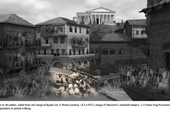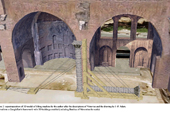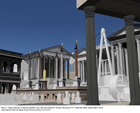Masons at Work
Brian Sahotsky
University of California Los Angeles

Brian Sahotsky
University of California Los Angeles
Masons, Materials, and Machinery: Logistical Challenges in Roman Building
In ancient Rome, the Forum district and its neighboring areas were popular destinations for new architectural construction. As this region became increasingly dense with monuments through the Republic and Early Empire, it became exponentially more difficult to locate projects there. The phenomenon is evidenced by the gradual decline of new building in the Forum through the Severan era. When the Basilica of Maxentius was conceived as a location-specific showpiece on the Velian Hill in 306 CE, the designers had to overcome significant topographical and structural obstacles. The surrounding density presented enough of a problem that an existing street was woven through the basilica's foundations. Additionally, the location of the brick-and-marble behemoth on the opposite side of the Palatine from the main material storage yards would also be challenging. In order to create its massive masonry vaults and punctuate them with 45-foot marble monoliths, the builders would first need to successfully maneuver the abundance of materials to the basilica. This would entail re-appropriating streets, channeling supply chains, locating production implements, and creating large staging areas, which impacted the city heavily during the years of building. This paper will investigate such logistical challenges in delivering manufacturing materials to the Roman construction site.


